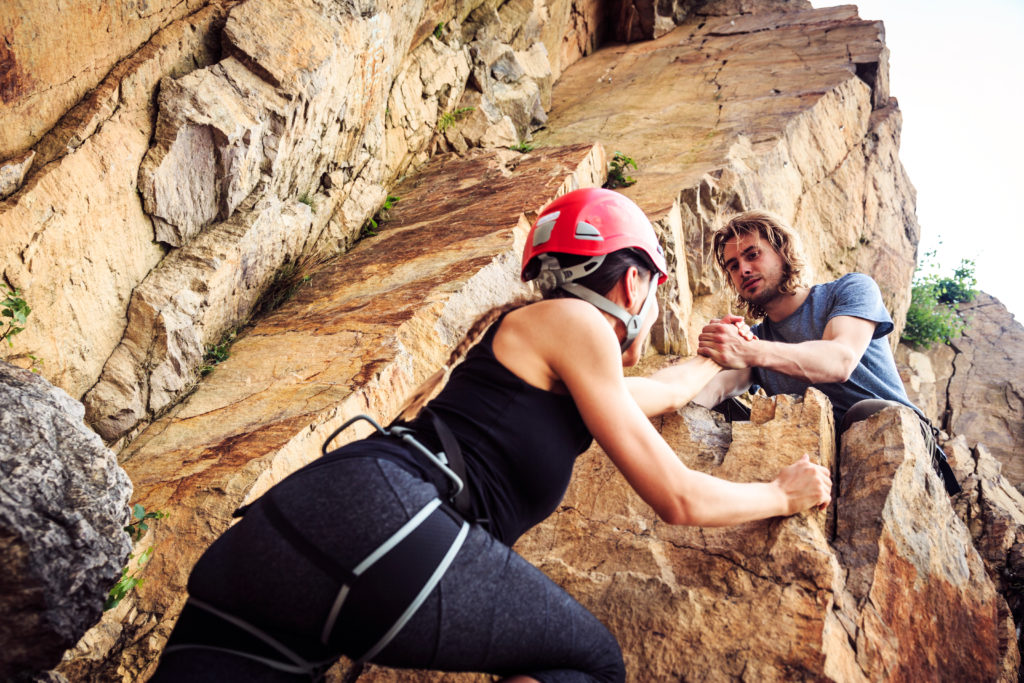Rock climbing is an exhilarating sport that not only offers an adrenaline-pumping adventure but also provides numerous mental and physical benefits. Whether you are scaling an indoor climbing wall or conquering natural cliffs, venturing to new heights can have a profound impact on your overall well-being. In this extensive exploration, we will delve into the intricacies of rock climbing, examining its history, techniques, equipment, safety measures, and the various mental and physical advantages it offers.
Introduction to Rock Climbing:
Rock climbing is an ancient practice that has evolved over the centuries. Initially, it was utilized for utilitarian purposes, such as accessing remote areas or escaping danger. As time progressed, climbing began to transform into a recreational activity, captivating adventurers seeking new challenges. Today, it has grown into a widespread sport, with climbing gyms sprouting in urban centers and enthusiasts exploring breathtaking natural landscapes.
A Brief History of Rock Climbing:
The history of rock climbing dates back to the early days of human civilization. We will explore the origins of climbing, from primitive techniques used by early humans to modern climbing practices. Along the way, we will highlight key milestones, notable climbers, and the evolution of climbing equipment.
Types of Rock Climbing:
Rock climbing encompasses a diverse range of styles and disciplines. From traditional climbing and sport climbing to bouldering and deep-water soloing, each form of climbing presents its own set of challenges and requirements. We will explore each type in detail, providing insights into the techniques and skills required for each.
Rock Climbing Equipment:
Safety is paramount in rock climbing, and the right equipment can make all the difference. This section will discuss the essential gear used in climbing, such as harnesses, ropes, carabiners, belay devices, and climbing shoes. We will also touch upon the advancements in climbing technology that have made the sport safer and more accessible.
Safety Measures and Training:
Climbing can be a risky activity, and it is crucial to adhere to safety measures and undergo proper training. This section will outline the importance of climbing courses, learning from experienced climbers, and following safety protocols at climbing gyms and outdoor locations. We will also delve into the significance of physical conditioning and mental preparation for climbers.
The Mental Benefits of Rock Climbing:
Rock climbing goes beyond the physical realm; it also offers numerous mental advantages. We will explore how climbing challenges the mind, fosters problem-solving skills, enhances focus, and promotes mindfulness. The mental resilience developed through climbing can have a positive impact on other aspects of life as well.
The Physical Benefits of Rock Climbing:
Climbing is a full-body workout that engages various muscle groups, leading to increased strength, endurance, and flexibility. This section will delve into the physical benefits of climbing, its cardiovascular advantages, and its role in weight management and bone density improvement.
Overcoming Challenges and Fears:
Conquering climbing challenges can be a transformative experience, and this section will focus on the process of overcoming fears and pushing personal boundaries. We will share inspiring stories of climbers who have faced daunting obstacles and emerged victorious, showcasing the power of determination and perseverance.
The Thrill of Outdoor Climbing:
While indoor climbing offers a controlled environment, outdoor climbing presents its own set of thrills and challenges. We will explore the allure of climbing natural rock faces, the importance of respecting the environment, and the beauty of connecting with nature through climbing.
The Climbing Community:
Climbing is not just an individual pursuit; it is also a social activity that fosters a strong sense of community. In this section, we will highlight the camaraderie among climbers, the importance of mentorship, and the supportive network that makes the climbing community so special.
Adaptive Climbing:
Climbing is a sport that can be adapted to accommodate individuals with various physical disabilities or limitations. We will explore the world of adaptive climbing and the organizations that work to make climbing more inclusive for all.
The Environmental Impact of Climbing:
As the popularity of climbing grows, so does the need to address its environmental impact. We will discuss the importance of sustainable climbing practices, the Leave No Trace principles, and efforts to preserve climbing areas for future generations.
The Future of Rock Climbing:
The world of rock climbing continues to evolve, with new techniques, technologies, and trends emerging. In this final section, we will ponder the future of climbing and its potential impact on individuals and society as a whole.
Conclusion:
In conclusion, rock climbing is far more than just a thrilling adventure sport. It is a physically and mentally demanding pursuit that offers a plethora of benefits to those who embrace its challenges. From improved physical fitness and mental clarity to a sense of accomplishment and community, climbing has the power to transform lives. As you embark on your own climbing journey, remember to prioritize safety, respect the environment, and savor every moment of reaching new heights. Happy climbing!

